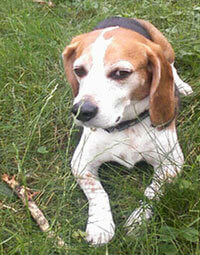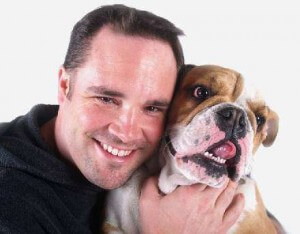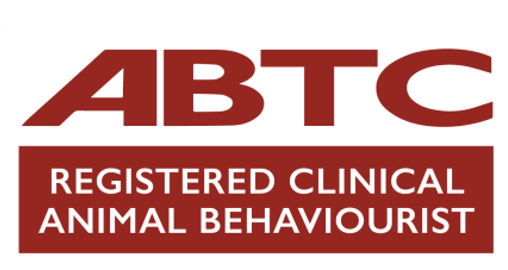In February, the NHS released statistics showing over a four year period the number of patients under 18 years treated for dog bites in London had more than doubled. In the Midlands, the figure rose by 80 per cent. And since 2006, dog attacks have risen overall by more than 40 per cent to nearly 3,800 a year, and these are just the ones being reported. So, why are we seeing an increase?
In my role as a behaviour specialist, I’m often called into homes where owners have been bitten by their dogs; understandably this is very distressing and confusing for owners, especially when they believe there was no clear warning, but was there? My job is to help owners understand how or why this can happen, how to reduce the risk of this happening again, teach alternative behaviours and learn the ‘warning’ signals to look out for.
 Dogs communicate all the time through a combination of visual, verbal and olfactory cues and signals. Like humans, much of dogs’ communication is sent through their body language, particularly facial expressions and body posture. Yet in the language of ‘dog’, there are no language barriers; dogs from different countries and different breeds will typically recognise the visual and vocal signals of another dog when it is feeling upset, anxious, fearful, tired, disinterested, frustrated, excited, happy and playful. Dogs can also demonstrate through these communication signals whether they’re super confident or submissive, so canine communication indicates the dog’s emotional response to situations, their social status and it enables the dog to express his needs. The language of dog can be subtle ranging from a glance, tensing of muscles or a slight shift in the dog’s posture to something more obvious, such as a bow or a loud bark. And, canine communication can be complex; a given gesture may have multiple distinct meanings depending on the situation and the accompanying behaviours.
Dogs communicate all the time through a combination of visual, verbal and olfactory cues and signals. Like humans, much of dogs’ communication is sent through their body language, particularly facial expressions and body posture. Yet in the language of ‘dog’, there are no language barriers; dogs from different countries and different breeds will typically recognise the visual and vocal signals of another dog when it is feeling upset, anxious, fearful, tired, disinterested, frustrated, excited, happy and playful. Dogs can also demonstrate through these communication signals whether they’re super confident or submissive, so canine communication indicates the dog’s emotional response to situations, their social status and it enables the dog to express his needs. The language of dog can be subtle ranging from a glance, tensing of muscles or a slight shift in the dog’s posture to something more obvious, such as a bow or a loud bark. And, canine communication can be complex; a given gesture may have multiple distinct meanings depending on the situation and the accompanying behaviours.
For example, many people believe the gesture of a wagging tail is the sign of ‘friendliness and approachability’, however, a dog can bite you hard when he’s wagging his tail. Many owners, especially children will hug their pets. Yet, hugging is an action only performed by humans and primates as an act of love and friendship. When an owner hugs a dog, there’s the potential for misunderstanding because dogs simply don’t hug. Furthermore, many dogs dislike being handled in this way, especially those sensitive to touch.
The two most common contexts in which children are bitten are;
- when a child approaches a dog that’s tied up because he wags his tail and “looks friendly”.
- when a child hugs a dog or tries to take something from him (such as a toy).
Often children want to touch or hug a dog as a way of expressing affection, yet the dog may easily misinterpret the well meaning intensions of the child. Like many adults, children are often unaware of the visual signs of an anxious dog, and often the irresistible urge to caress the dog overrides that individual’s ability to accurately ‘read’ the dog.
Below are some of the common pre-emptive signs of aggression. If you spot your dog exhibiting some of these behaviours (not just one but several) be sure to stop the stimulus that’s causing this reaction or, at the very least, enable your dog to have distance away from the thing/person/whatever it is that’s upsetting him to reduce his stress levels.
NOTE: Always take into account the context to which behaviours are being exhibited in. For example, a dog may yawn, pant and pace around in anticipation of going for a walk when you get his lead. This is the dog’s way of getting more oxygen into his system ready for his walk and the pacing about might be because the owner is taking his time in getting his coat on etc. In this instance, the dog isn’t stressed. However, if an unknown visitor comes into the house and reaches out to greet the dog, then a yawn, panting and pacing might be indicators of the dog’s stress levels rising in anticipation of being approached by a stranger.
Common indicators of stress:
- Rapid blinking
- Lip licking, nose licking
- Yawning
- The dog’s whisker holes look more pronounced
- Looking away, turning head away
- Panting
- Tongue is overly extended
- Sitting or standing crouched
- Paw lift
- Sniffing the ground or scratching
- Body turning away (a U-shape)
- Walking away
- Creeping back
- Tail tucked under
- Lying down, leg up
- Stiffening up
- Skin or eyes reddening
- Hair shredding
- Penis crowning
- Sweaty paws
- Momentary freezes / stillness
- Staring
- Eyes are wide
- Growling
- Snapping
- Lunging
To find out more about canine communication, come to our workshop An Introduction to Dog Body Language. If you’re unable to make this date, why not host your own workshop which will can come and facilitate for you.
Learn more about our classes

Get Hanne's Book
Playing With Your Dog will help any dog owner work out the games that are best suited for their pet to play throughout his life, from puppyhood to old age. The book also shares some tricks for all ages, group activities, and recommended toys that dogs will enjoy.

























